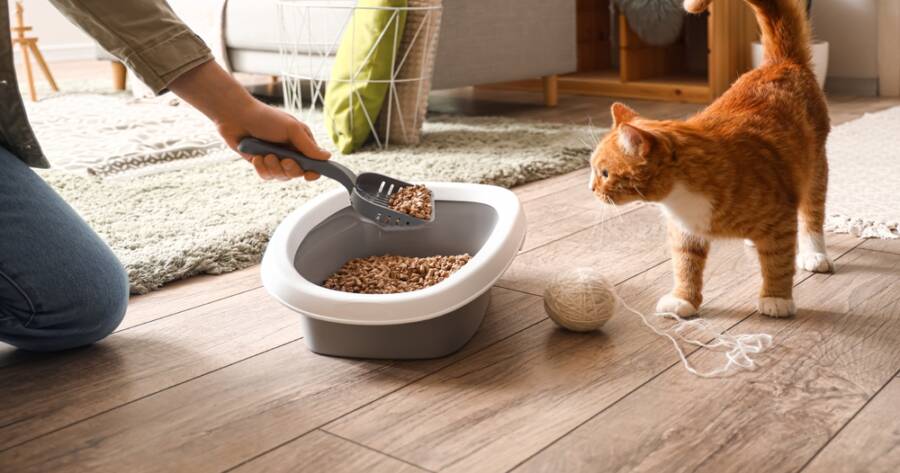A clean, well-placed litter box is more important than you might think, both for your cat’s comfort and your home’s freshness. When something’s off, your cat will likely let you know in the most unpleasant way possible. From box size to placement to cleaning habits, simple missteps can lead to stress, accidents, and odors. Avoiding common litter box mistakes helps ensure your feline friend stays content and your living space stays clean and odor-free.
Choosing the Wrong Litter Box Size or Type
A litter box that’s too small or poorly designed can make your cat feel cramped or uncomfortable. Many cats prefer open boxes that offer space and visibility, especially if they’re larger or senior pets with limited mobility. Covered boxes may contain odors better for you, but they can trap smells and make some cats feel cornered or anxious.
When choosing a box, make sure it’s at least one and a half times the length of your cat from nose to tail. Low-sided boxes are great for kittens or older cats, while high-sided ones can help reduce scatter. The right size and design go a long way in keeping your cat happy (and your floors cleaner!).
Not Cleaning the Box Often Enough
One of the biggest mistakes cat owners make is not scooping the litter box daily. Cats are clean creatures, and a dirty box may drive them to do their business elsewhere. Regular scooping not only keeps your home smelling fresh but also helps you spot any unusual changes in your cat’s waste that may signal health issues.
Aim to scoop at least once a day and fully change and wash the box weekly. Use mild soap and avoid strong-smelling cleaners that could deter your cat from using the box. A clean litter box encourages consistent use and keeps everyone in the home happier.
Placing the Litter Box in the Wrong Spot
Where you put the litter box matters more than you might think. High-traffic or noisy areas, such as next to a washing machine or in a busy hallway, can make your cat feel too exposed. Similarly, placing it near their food and water dishes can cause discomfort or confusion.
Choose a quiet, low-traffic location where your cat can have privacy without feeling trapped. Make sure the spot is easily accessible—especially for older cats who may have trouble with stairs. If you live in a multi-story home, consider having a box on each level to prevent accidents.
Using the Wrong Type of Litter
Cats can be picky about litter texture, scent, and material. Using heavily scented or coarse litter might seem appealing to humans, but many cats dislike these options. Unscented, clumping clay litter is often a safe bet, but some cats prefer alternatives like recycled paper, pine, or corn-based options.
If your cat suddenly stops using the litter box, try changing the type gradually to see if that makes a difference. When introducing a new litter, mix it slowly with the old one over a week to help your cat adjust. Finding the right match helps prevent accidents and promotes consistent litter box use.
Not Having Enough Litter Boxes
The golden rule is one litter box per cat, plus one extra. Even in single-cat households, having more than one box can reduce stress and prevent issues like territorial marking or holding urine too long. For multi-cat homes, not having enough boxes can lead to competition, tension, or avoidance.
Place boxes in separate locations, not side by side, to ensure each one feels like a distinct space. Providing enough clean, accessible boxes helps every cat feel secure—and keeps your home cleaner in the process.
Ignoring Behavioral or Medical Red Flags
If your cat starts going outside the box, don’t assume it’s just bad behavior. It could be a sign of stress, territorial issues, or an underlying medical condition like a urinary tract infection. Before changing litter or location, observe for other symptoms and consult your vet if anything seems off.
Stress from a new pet, changes in routine, or environmental noise can also disrupt litter box habits. Addressing the root cause quickly helps prevent long-term behavioral problems and ensures your cat’s health and comfort remain a priority.
A Cleaner Box Means a Happier Cat
When it comes to litter box habits, small mistakes can lead to big problems. But with a little attention to detail, like location, cleanliness, and the right type of litter, you can create a space your cat will reliably use. Staying tuned in to your cat’s preferences and behavior helps you catch issues early and maintain harmony in your home. A clean, well-maintained litter box isn’t just about hygiene, it’s a simple act of care that keeps your cat happy and stress-free.

